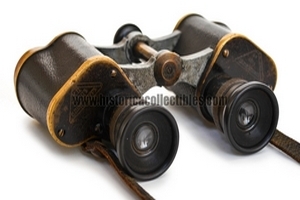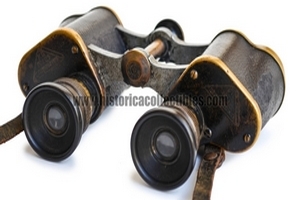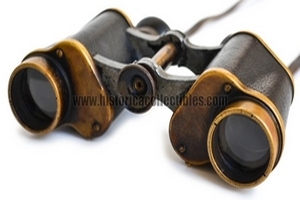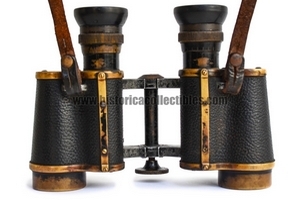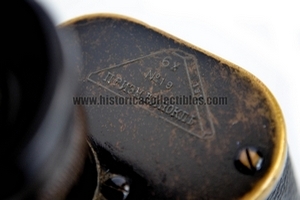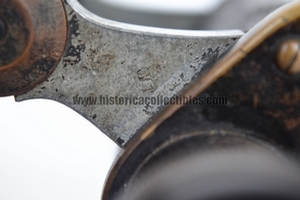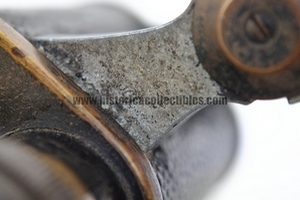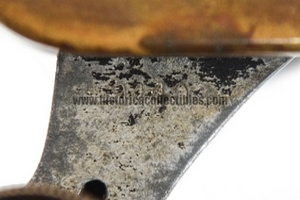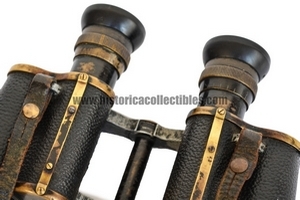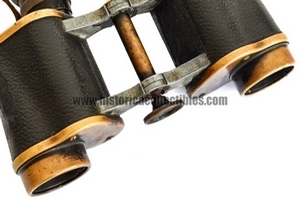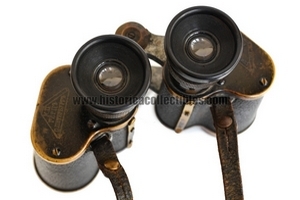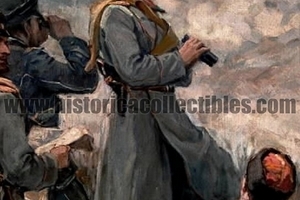Binoculars 6x К.П. ГЕРЦЬ С.ПЕТЕРБУРГЬ C.P. Goerz S. Petersburg Russian Artillery, 1912
6x binoculars, produced in 1912, by C.P. Goerz of S. Petersburg intended for Russian artillery officers during the Balkan Wars and certainly also used during the First World War.
On the left eyepiece plate there is a logo containing, in Cyrillic, "К.П. serial number "N°19" and the year of production "1912", also the structural characteristic "ПРИЗМ. бИНОКЛЬ" or "Prism Binoculars". There are two symbols stamped near the degrees that regulate the interpupillary distance which, in all likelihood, refer to acceptance by the relevant military authorities.
There is also the reference number for the military registration number.
The presence of the unusual reticle, associated with the production date, places, with absolute certainty, the use of the binoculars by Russian Artillery officers during the Balkan Wars.
The Balkan Wars were two wars fought in south-eastern Europe in 1912-1913 during which the member states of the Balkan League (Kingdom of Bulgaria, Greece, Kingdom of Montenegro, and Kingdom of Serbia) first conquered Macedonia and large part of Thrace and then clashed with each other over the division of the conquered lands. The two Balkan wars represented an important premise for the outbreak of the First World War: it was precisely following the Serbian expansion in the region that Austria-Hungary began to become alarmed. These fears were shared by Germany, which saw Serbia as a precious ally of the threatening Russia. Therefore, it was precisely the increased Serbian power that represented one of the main reasons that pushed the Central Powers to decree the start of the First World War following the assassination of the Archduke of Austria Franz Ferdinand in June 1914.
The view is perfectly sharp, collimated and very bright.
History of Goerz:
The C.P. Goerz was a company of optical and photographic instruments founded in Berlin in 1886 by Carl Paul Goerz (1854-1923), together with Carl Moser, optical researcher, and Ottomar Anschutz, laboratory technician in close friendships; precisely from this last C.P. In 1889, Goerz had purchased the patent for the construction of the first shutter for cameras capable of shutter speeds of 1/1000 of a second.
The company specialized in the production of lenses, cameras, telescopes and binoculars, including for military use. In 1886 it had around 25 employees, which rose to 2500 in 1911, although at its maximum expansion the workforce reached 10,000 employees.
In terms of size it was not even second to Zeiss (which in the same period had 1000 fewer workers), and it exported to many countries, including Russia and the United States. In 1905 Goerz American Optical continued to operate independently in the United States until 1972. In 1908 Goerz Photochemisches Werk GmbH was founded in Berlin, this section of the Goerz group produced film for photography and cinema.
Goerz had a fundamental relationship with the armies of the time and military supplies. In fact, it remained famous both for the large trench binoculars (First World War) and for the binoculars supplied to all the weapons of the Austrian-German Army (including navy and air force) as well as Bulgaria, Romania etc. Even today there are countless examples of Goerz binoculars that have value on the war and optical antiques market, one must think that in 1906 Goerz had already produced and exceeded 100,000 "Triëder" model binoculars, both for civil and military use.
In addition to the main and historic factory in Friedenau (Berlin), C.P. Goerz was also present in London, Paris and Vienna, Bratislava, Milan, Riga and St. Petersburg. Other sections were dedicated to chemical products and also for typewriters or calculating machines, which a division of the company was responsible for producing until 1945.
In 1910 the company bought the "Sendlinger Optische Galswerke" company founded by J. Von Fraunhofer and C. A. Steinheil for the production of optical glass and mirrors, which made it completely independent from purchasing from other retailers. After the First World War, with the Treaty of Versailles, the German companies that had produced war material were slowed down in production and this quickly led to a serious economic situation.
In 1923 Paul Goerz died and the company, which was in bankruptcy, was purchased by Zeiss which, together with the companies "Contessa", "Nettel", "ICA" and "Ernemann" founded Zeiss Ikon in 1926. The American division of Goertz became an independent company under the name Goertz American Optical Co. producing camera lenses and continuing their technical development. In 1971 it was bought by Kollmorgen, which was absorbed by Schneider Optics in 1972.


